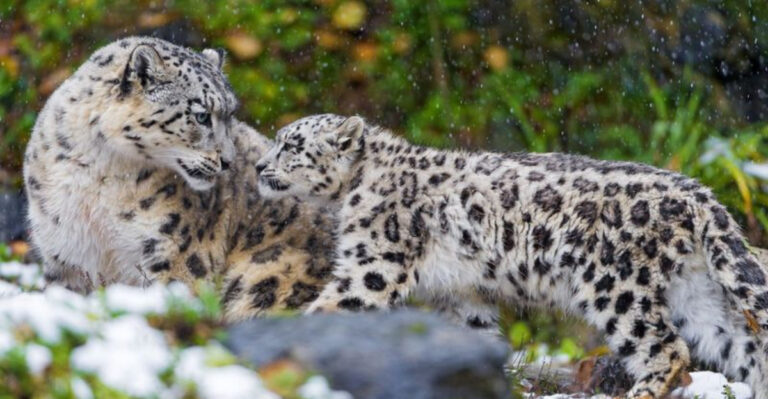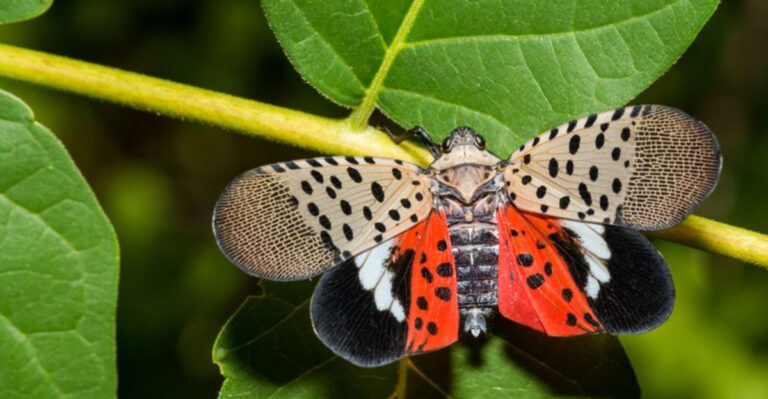Meet The Owls Of North America: 15 Fascinating Species To Know
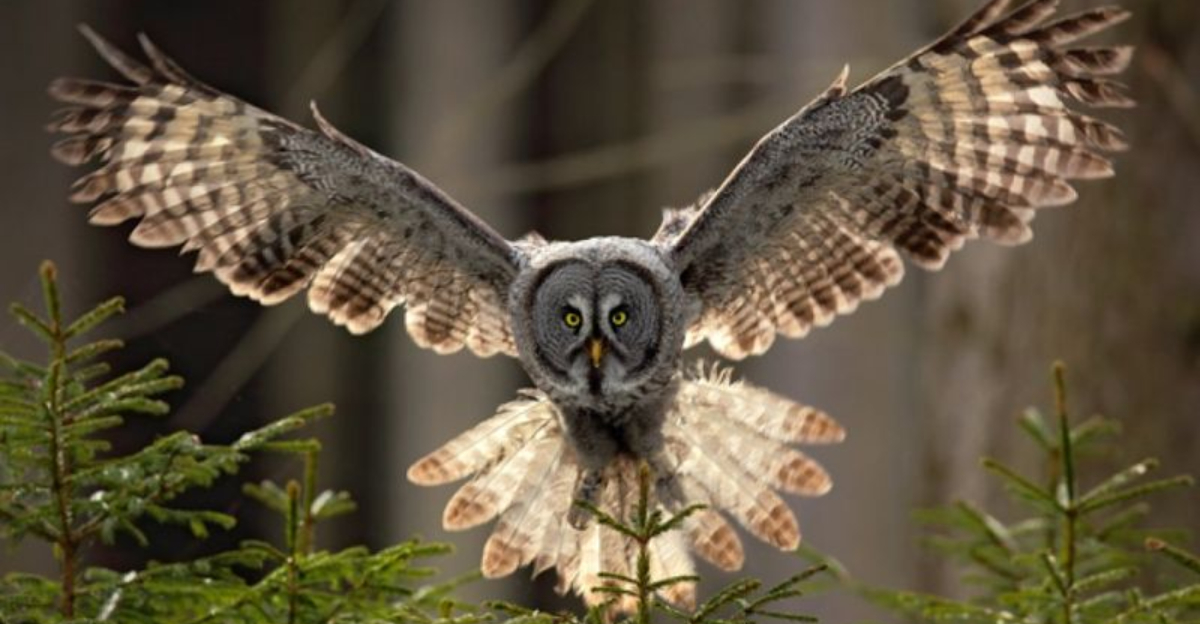
Owls are among the most mysterious and captivating birds in North America. With their silent flight, incredible hunting abilities, and haunting calls, these nocturnal raptors have fascinated humans for centuries.
From the tiny Elf Owl to the massive Great Gray Owl, North America is home to a remarkable variety of owl species, each with unique adaptations and behaviors worth discovering.
1. Great Horned Owl: The Fierce Night Hunter

Named for the distinctive tufts on their heads that resemble horns, these powerful predators are among the most common and adaptable owls in North America. They hunt everything from rodents to skunks and even other owls!
With piercing yellow eyes and a wingspan reaching five feet, Great Horned Owls can exert 500 pounds of pressure with their talons. They’re found in nearly every habitat from desert to deep forest.
2. Barn Owl: The Heart-Faced Ghost
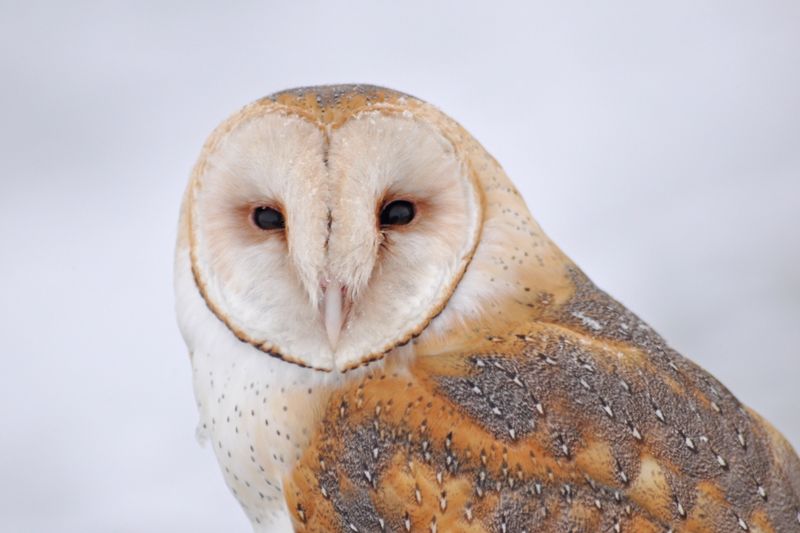
Gliding silently through farmlands and open fields, Barn Owls are instantly recognizable by their heart-shaped faces and eerie, pale appearance. Farmers welcome these natural pest controllers who can consume up to 1,000 mice annually.
Unlike most owls, Barn Owls don’t hoot. Instead, they produce a haunting screech that has contributed to many ghost stories. Their hearing is so precise they can locate prey in complete darkness.
3. Snowy Owl: Arctic Visitor From The North

Harry Potter fans recognize these magnificent white owls immediately. Unlike most owl species, Snowy Owls hunt during daylight hours and migrate south from the Arctic tundra during winter months.
Males become increasingly white with age, while females retain some dark barring. These ground-nesting owls primarily hunt lemmings, sometimes catching up to 1,600 in a single year to feed their chicks!
4. Eastern Screech Owl: The Suburban Camouflage Master

Despite their name, Eastern Screech Owls rarely screech. They produce an eerie trembling whistle that floats through suburban neighborhoods after dark. These small owls come in two color phases: gray and rusty-red.
Masters of disguise, they blend perfectly against tree bark when roosting. About the size of a robin, these pint-sized predators punch above their weight, taking prey as large as rabbits while being small enough to nest in backyard birdhouses.
5. Burrowing Owl: The Underground Dweller

Breaking the owl stereotype, Burrowing Owls live underground and are active during daylight hours. These long-legged, ground-dwelling owls take over abandoned prairie dog or ground squirrel burrows rather than building their own.
They have a charming habit of decorating their burrow entrances with animal dung to attract insects for food. When threatened, young Burrowing Owls can mimic a rattlesnake’s buzz to scare off predators!
6. Northern Saw-Whet Owl: Tiny Forest Sprite
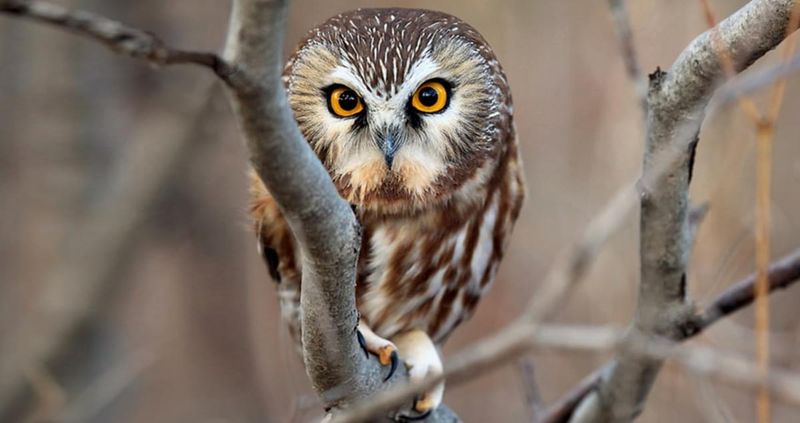
Weighing less than a deck of cards, these adorable pint-sized owls are among North America’s smallest. Their name comes from their call, which early settlers thought resembled the sound of a saw being sharpened on a whetstone.
Northern Saw-whet Owls have disproportionately large heads and cat-like facial features. Despite their tiny size, they’re fierce hunters with a special fondness for mice, which they often cache during winter months for later consumption.
7. Spotted Owl: The Old-Growth Forest Guardian
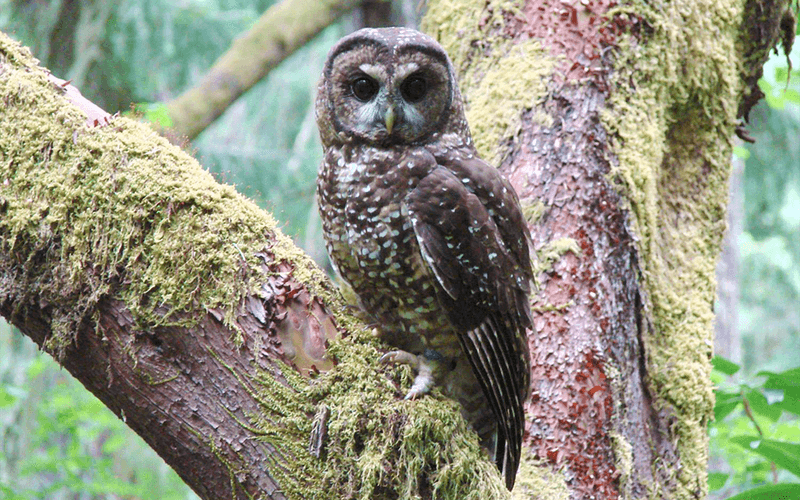
Famous for sparking intense conservation debates, Spotted Owls require ancient forests with complex canopies and abundant dead trees. Their declining numbers serve as indicators of forest health throughout the Pacific Northwest.
These chocolate-brown owls with white spots hunt flying squirrels that glide through old-growth forests. They’re extremely territorial, using the same nest site for generations if undisturbed. A single pair needs up to 3,000 acres of mature forest to thrive.
8. Barred Owl: The Vocal Forest Comedian
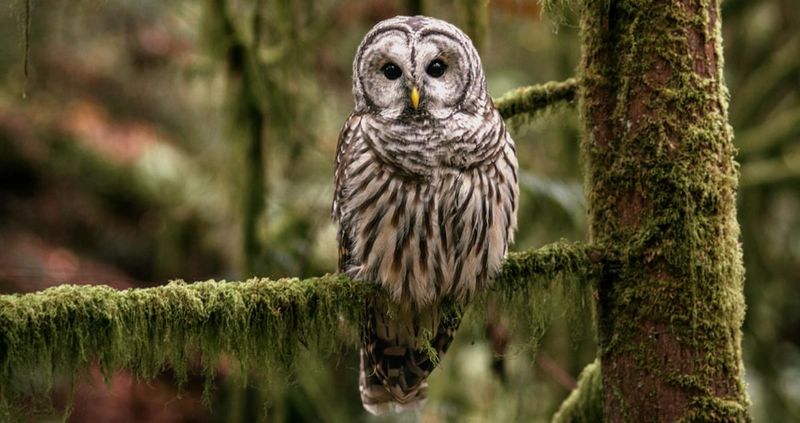
“Who cooks for you? Who cooks for you all?” This distinctive hooting call echoes through eastern forests, giving away the Barred Owl’s presence. With soulful brown eyes instead of the yellow eyes common in other owls, these birds have a uniquely expressive face.
Barred Owls are expanding their range westward, concerning conservationists who worry about competition with the endangered Spotted Owl. They’re one of the most vocal owls, with a repertoire including hoots, cackles, and even maniacal laughter.
9. Elf Owl: North America’s Tiniest Owl

Barely larger than a sparrow, Elf Owls claim the title of smallest owl in North America. These desert specialists make their homes in abandoned woodpecker holes in saguaro cacti throughout the Southwest.
Despite their diminutive size, they’re fearless insect hunters with a particular taste for scorpions. They’ve developed a clever technique of removing the stinger before consumption. During extreme heat, Elf Owls enter a torpid state similar to hibernation to conserve energy.
10. Great Gray Owl: The Phantom of the North

Standing nearly 3 feet tall with a 5-foot wingspan, Great Gray Owls are North America’s largest owls by length. Despite their imposing size, they’re mostly fluff – they weigh less than Great Horned Owls!
Their enormous facial disks collect sound like satellite dishes, allowing them to hear mice moving beneath 2 feet of snow. When hunting, they plunge headfirst through snow crust, using their exceptional hearing rather than sight to pinpoint prey.
11. Long-Eared Owl: The Secretive Forest Dweller
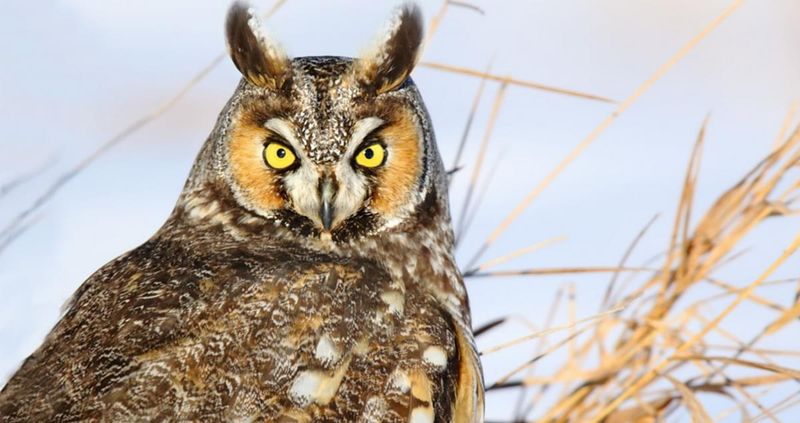
With ear tufts longer than any North American owl except the Great Horned, these slender, medium-sized owls are masters of disguise. Their vertical posture and striped plumage make them nearly invisible against tree trunks during daytime roosting.
Unusually social for owls, Long-eared Owls gather in communal winter roosts of up to 100 birds. Their eerie, low-pitched hoots carry for miles through pine forests. They’re declining in many areas due to habitat loss of dense conifer stands.
12. Short-Eared Owl: Grassland Glider
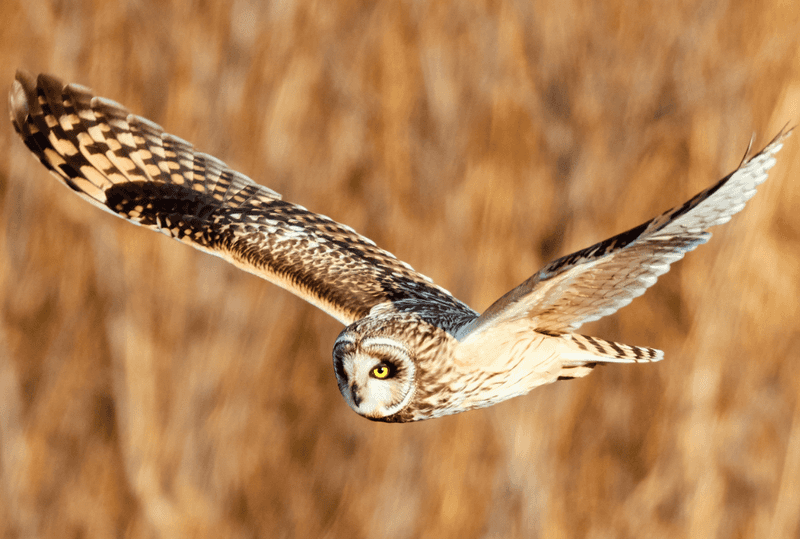
Unlike most owls, Short-eared Owls hunt during daylight, especially at dawn and dusk. Their bouncy, moth-like flight pattern makes them easy to identify as they patrol open grasslands and marshes for voles and mice.
Their name comes from tiny ear tufts that are rarely visible. These ground-nesting owls create simple scrapes in tall grass where females lay up to 11 eggs. During courtship, males perform spectacular aerial displays, complete with wing-clapping and diving.
13. Western Screech Owl: Desert Night Vocalist
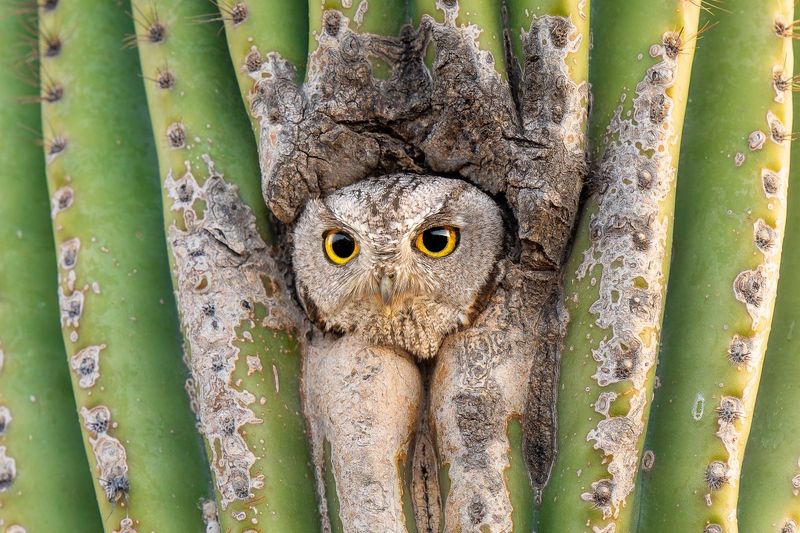
Smaller than a can of soda, these compact predators are masters of desert and woodland environments across western North America. Their call isn’t a screech at all, but rather a series of accelerating hoots that sound like a bouncing ball.
Western Screech Owls readily accept nest boxes, making them popular with suburban birders. They’ve adapted to hunt everything from insects to small birds. Unlike their eastern cousins, they rarely come in the red color morph, typically appearing gray-brown.
14. Northern Hawk Owl: The Daylight Hunter
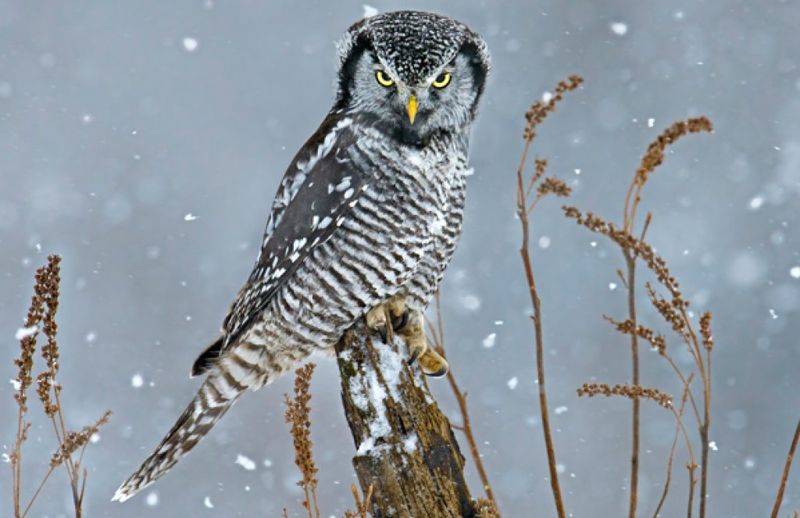
Bridging the gap between hawks and owls, these unique birds combine the body shape of an owl with the hunting behavior of a hawk. They’re active during daylight hours and perch conspicuously atop trees, scanning for prey.
Northern Hawk Owls can spot a vole from half a mile away! Unlike most owls, they lack facial disks and have a long, tapered tail. These boreal forest specialists occasionally irrupt southward during winters when rodent populations crash in their Canadian homeland.
15. Flammulated Owl: The Insect Specialist
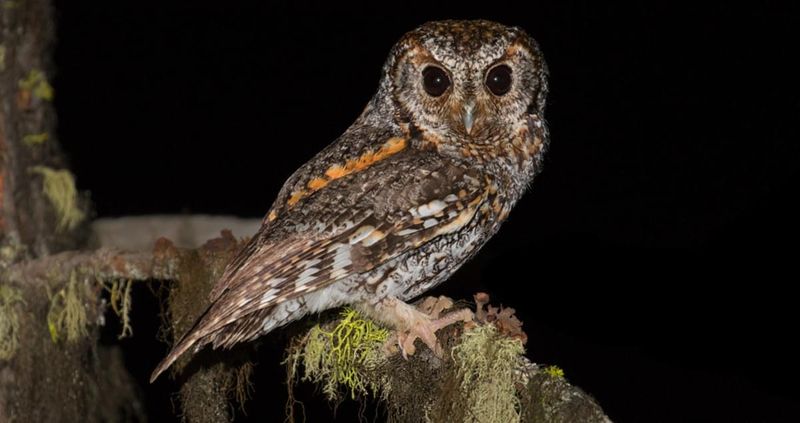
Barely larger than a sparrow, these tiny owls with flame-colored eyebrows are the only strictly insectivorous owls in North America. Their specialized diet means they must migrate to Mexico each winter when insects disappear.
Flammulated Owls have unusually small feet compared to other owls, reflecting their diet of moths and beetles rather than vertebrates. Their low-pitched hooting belies their tiny size – most people expect such deep calls to come from much larger owls!


